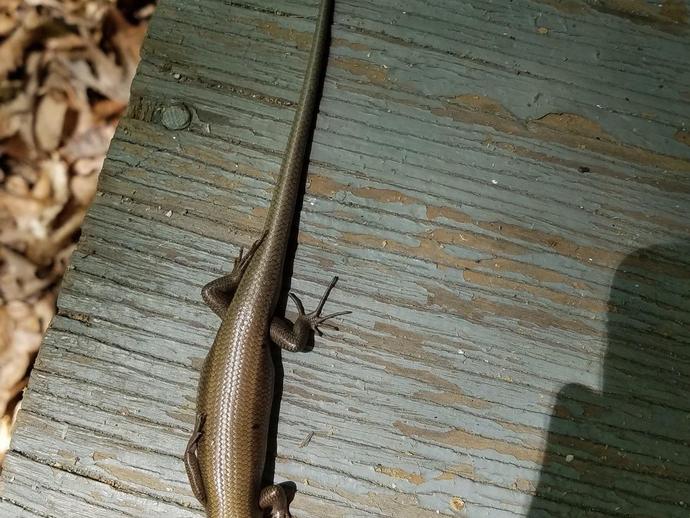May 22, 2020
Longtime VMNH friend and supporter Virginia King recently sent us this photo of a male five-lined skink! According to reptile expert Jason Gibson, this skink is either Plestiodon fasciatus, the five-lined skink, or Plestiodon inexpectatus, the southeastern five-lined skink; it's sometimes difficult to tell the difference in photos.
Once five-lined skinks reach maturity, it's easy to tell the difference between males and females. Females and juvenile skinks are black with bright blue tails, and they have five thin yellow lines running down their backs. On the other hand, once males reach adulthood, their stripes begin to fade; older males like the one pictured turn a uniform olive brown color.
During the breeding season, the heads of male five-lined skinks turn orange. While the breeding males will tolerate female and juvenile skinks, they won't abide another male skink in their territory. If you see two male skinks in close proximity, keep an eye on them, because they might start fighting!
Thank you to Virginia King for sharing this photo and to Jason Gibson for the identification!

 Hours & Admissions
Hours & Admissions Directions
Directions

